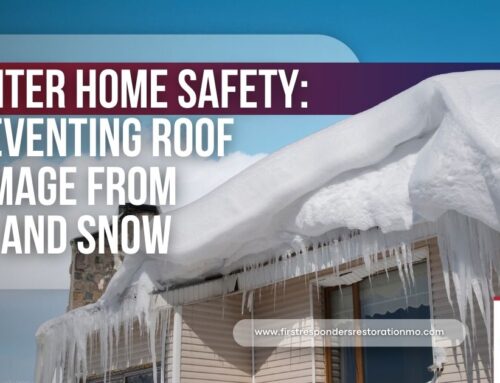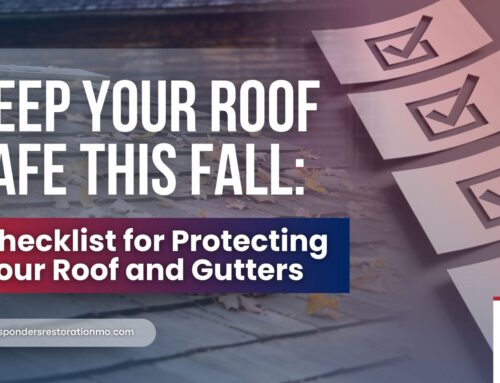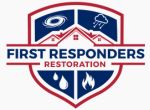Why End-of-Summer Storms Can Cause Serious Roof Damage
Choosing the Right Awareness Strategy for Late-Summer Weather Risks
Are you underestimating the damage Missouri’s late-summer storms can do to your roof? You’re not alone. As temperatures soar and humidity peaks, homeowners are often caught off guard by severe storm systems that strike without much warning. For First Responders Restoration (FRR), we know this is prime time for roofing emergencies. That’s why we’re breaking down exactly why end of summer storm roof damage is serious business and how to protect your property now.
Why It Matters
Late-summer storms bring a dangerous combination of heat, moisture, and wind—ingredients for disaster when it comes to roof stability. As experts in Roofing and Exteriors and Storm Damage Restoration, FRR sees a spike in service calls each August. Many of these issues could be avoided with proactive inspections and proper stormproofing.
What Makes End-of-Summer Storms So Damaging?
Late-summer storms bring a dangerous combination of heat, moisture, and wind—ingredients for disaster when it comes to roof stability. As experts in Roofing and Exteriors and Storm Damage Restoration, FRR sees a spike in service calls each August. Many of these issues could be avoided with proactive inspections and proper stormproofing.
Common Types of Roof Damage Caused by Summer Storms
Granular Loss on Roof Shingles
Your roof is like a jacket for your house. The shingles are the outer fabric, and the tiny granules on top are like the waterproof coating. When summer storms bring strong winds, heavy rain, or hail, they can tear off shingles or wash away the granules.
Granules are important because they protect the roof from the sun and help keep water out. If the granules are gone, the roof wears out faster, just like a jacket without its coating would let water in. After a storm, it’s a good idea to check your roof for missing shingles or bare spots.


Water Intrusion
Water intrusion happens when rainwater gets past your roof and starts leaking into your home. Summer storms often bring heavy rain and strong winds that can push water under loose shingles or through small cracks.
Think of your roof like an umbrella. If the umbrella has a hole or isn’t closed properly, water gets through and soaks you. In the same way, if your roof has any weak spots, water can sneak in and damage ceilings, walls, or even wiring. Catching and fixing leaks early can prevent serious and expensive problems later.
Gutter and Drainage Failures
Gutters and downspouts work like street gutters by guiding water away from your roof and home. During summer storms, heavy rain or debris like leaves and twigs can clog them or cause damage.
When water can’t drain properly, it may back up onto the roof or overflow down the sides of your house. This can lead to roof leaks, wall damage, or even problems with your home’s foundation. Keeping gutters clean and in good shape helps prevent these issues during storms.
Explore our Roofing and Siding Services for comprehensive solutions.
Common Types of Roof Damage Caused by Summer Storms
Granular Loss on Roof Shingles
Your roof is like a jacket for your house. The shingles are the outer fabric, and the tiny granules on top are like the waterproof coating. When summer storms bring strong winds, heavy rain, or hail, they can tear off shingles or wash away the granules.
Granules are important because they protect the roof from the sun and help keep water out. If the granules are gone, the roof wears out faster, just like a jacket without its coating would let water in. After a storm, it’s a good idea to check your roof for missing shingles or bare spots.


Water Intrusion
Water intrusion happens when rainwater gets past your roof and starts leaking into your home. Summer storms often bring heavy rain and strong winds that can push water under loose shingles or through small cracks.
Think of your roof like an umbrella. If the umbrella has a hole or isn’t closed properly, water gets through and soaks you. In the same way, if your roof has any weak spots, water can sneak in and damage ceilings, walls, or even wiring. Catching and fixing leaks early can prevent serious and expensive problems later.
Gutter and Drainage Failures
Gutters and downspouts work like street gutters by guiding water away from your roof and home. During summer storms, heavy rain or debris like leaves and twigs can clog them or cause damage.
When water can’t drain properly, it may back up onto the roof or overflow down the sides of your house. This can lead to roof leaks, wall damage, or even problems with your home’s foundation. Keeping gutters clean and in good shape helps prevent these issues during storms.
Explore our Roofing and Siding Services for comprehensive solutions.
Common Types of Roof Damage Caused by Summer Storms
Granular Loss on Roof Shingles
Your roof is like a jacket for your house. The shingles are the outer fabric, and the tiny granules on top are like the waterproof coating. When summer storms bring strong winds, heavy rain, or hail, they can tear off shingles or wash away the granules.
Granules are important because they protect the roof from the sun and help keep water out. If the granules are gone, the roof wears out faster, just like a jacket without its coating would let water in. After a storm, it’s a good idea to check your roof for missing shingles or bare spots.


Water Intrusion
Water intrusion happens when rainwater gets past your roof and starts leaking into your home. Summer storms often bring heavy rain and strong winds that can push water under loose shingles or through small cracks.
Think of your roof like an umbrella. If the umbrella has a hole or isn’t closed properly, water gets through and soaks you. In the same way, if your roof has any weak spots, water can sneak in and damage ceilings, walls, or even wiring. Catching and fixing leaks early can prevent serious and expensive problems later.
Gutter and Drainage Failures
Gutters and downspouts work like street gutters by guiding water away from your roof and home. During summer storms, heavy rain or debris like leaves and twigs can clog them or cause damage.
When water can’t drain properly, it may back up onto the roof or overflow down the sides of your house. This can lead to roof leaks, wall damage, or even problems with your home’s foundation. Keeping gutters clean and in good shape helps prevent these issues during storms.
Explore our Roofing and Siding Services for comprehensive solutions.
Signs Your Roof May Be Storm-Damaged
- Water stains on ceilings or walls: These stains often appear as brown rings or patches, indicating moisture penetration from the roof.
- Curling, cracked, or missing shingles: These defects are early warning signs of wind or hail impact that could escalate into leaks.
- Shingle granules in gutters or downspouts: A sign of shingle degradation—granule loss makes shingles brittle and ineffective.
- Leaks during or after rain: Active leaks signal a breach in your roof’s waterproof barrier and need immediate attention.
- Increased indoor humidity or mold odor: Damp insulation or attic air often carries a musty smell, indicating trapped moisture and possible mold colonies.
Read our guide on Mold Prevention After Spring Storms.
Why You Need Immediate Roof Inspection After a Storm
Ignoring roof damage only makes things worse. Delaying inspections can:
- Increase repair costs: Small issues can worsen quickly, turning minor patches into full replacements.
- Invalidate insurance claims: Most policies have strict filing deadlines and require documentation shortly after a storm.
- Cause secondary damage like interior mold or electrical issues: Moisture from roof leaks can reach wiring and drywall, leading to safety hazards and increased repair complexity.
Call FRR now for a free, no-obligation consultation before small issues turn into massive bills.
Contact Us to schedule your storm inspection.
What to Do Immediately After a Storm
How FRR Can Help: Fast, Local, Reliable
Whether it’s Water Damage Restoration, Storm Damage, or Roofing and Exteriors, First Responders Restoration has the manpower and expertise to:
- Perform rapid assessments: Identify damage that may be hidden beneath roofing materials.
- Secure your roof from further damage: We install temporary tarps, seal openings, and remove immediate risks.
- Provide detailed insurance documentation: We deliver thorough reports and imagery that meet insurance provider requirements.
- Fully restore your property: We manage your roof restoration from initial damage control to full repair or replacement.
FAQs
Final Thoughts: Don’t Wait Until It’s Too Late
Late-summer storms are unpredictable but your response doesn’t have to be. If you suspect your roof has suffered damage or want a seasonal check-up, FRR is your go-to expert in Missouri.








Leave A Comment